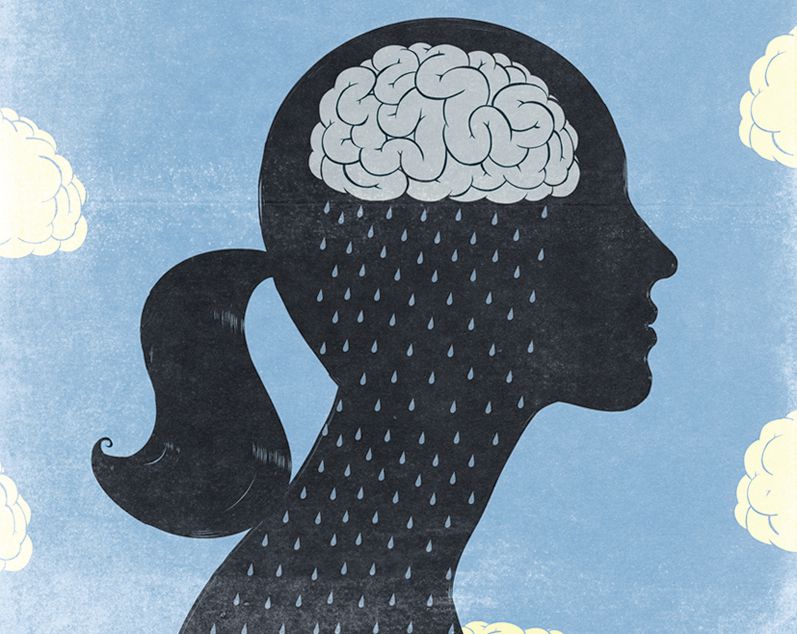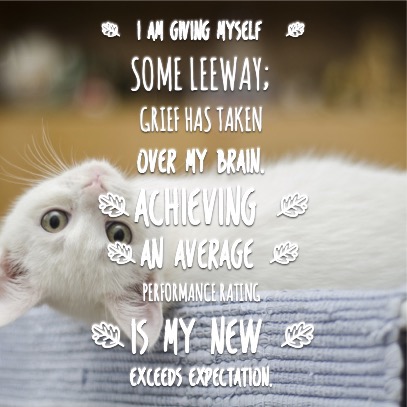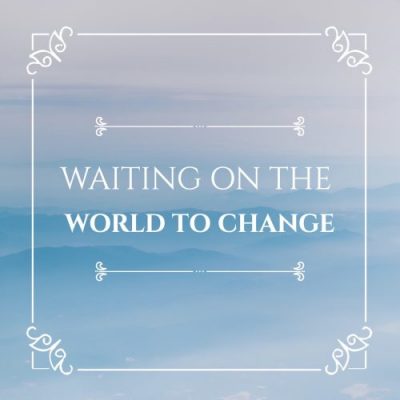Illustration by Shout
Those who have not lost a child told me work is a good distraction. Those who have lost a child told me the same.
There are many famous lines from the Nora Ephron directed and co-written 1993 romantic comedy, Sleepless in Seattle, starring Tom Hanks and Meg Ryan. The film contains parallel stories of two people looking for love. Sam is widowed and is seeking a love that is magical, like the one he had with his wife. Annie is looking for a love that is equivalent to Gary Grant, and Debra Kerr’s Hollywood portrayed love story, depicted in An Affair to Remember.
“Work, work will see you through this.”
The quote I recall did not make the list of those I found on the internet. It is from a scene after the death of Sam’s wife, where Sam’s boss tells him to take some time off from work, for a mental break, and take his son fishing. Sam replies by regurgitating the plethora of unsolicited advice he has received, quoting one, “Work, work will see you through this.” It is the quote I remember now because it is relevant to me. Sam and his young son have to figure out how to live with their grief and the hole in their lives. Work as a tool is the advice he receives from well-intended supporters.
I went back to work after 6 months, from my son’s death, first part-time, and then gradually full-time. At least that was the plan. Part-time quickly led to overtime due to the work demands of my job.
I am not the person I was before, everything seems so much harder, including work.
This job seems so much harder than it did before. It is hard to concentrate. The 10 hour day bombardment of emails, instant messages, and working on the weekend is way beyond tolerable. The before me would be fine with the workload, taking it on, and leading through it. But I am different. Even though this work has meaning, it really is not worth the sleepless nights thinking about how to get the job done, and the risks I need to circumvent. I lay awake at 3:00 am replaying the conversations I had during the day, the actions I ran out of time to complete, pictures in my head of presentation material I need to create, and discussions with leaders I need to undertake.
"How are you?" Is that really a question or an opening statement?
Each meeting someone starts the conversation with the ubiquitous question, “How are you? How was your weekend?” On a recent Friday, after a long week, I replied, “I will never answer anything but fine to this question. I do not think people are prepared to receive a truthful response.
The person I was having this conversation agreed with my statement and then opened up sharing, “I am recovering from a terrible cold, and I was up in the middle of the night with my baby.” I was polite. I did not share, “I am beyond terrible. I am living with an incurable broken heart caused by grief, decreased mental and emotional strength, and a soul that is forever changed. “
I avoid work dinners and small talk. I join meetings last, so I do not have to listen to co-workers describe forgettable events and minor struggles like they are materially significant.
Between meetings, I open up email’s to respond. If the answer is not quick, and I have to think through it, my mind quickly moves on to another topic. My eyes move from the keyboard to computer screens, but not registering anything worthwhile. In the evening after the bombardment of the day is over, I weed my way through my desktop full of open emails, unread messages, and open files. Work days move into work evenings so I can have silence to concentrate.

The Grieving Brain
My mind operates differently than before. I miss appointments. I put them in my calendar and set reminders on my phone to alert me, and I still miss them or show up a day early. I quickly forget passwords, or where I wrote them down, and where I put things. I miss my exit, having to double back. I once accidentally gave the little dog the bigger dog’s medicine and thank goodness I came to my senses in time to dig it out of her throat.
I have a short attention span, memory loss, and anger easy. My grief also impacts me physically. I feel tired and weak and have little desire to exercise or eat healthy food. There is a trauma aspect for going back to work, as it brings back all of those memories of my life before he died and the immense anguish and guilt that comes with it.
There is medical research that proves the grieving brain has more activity than a healthy mind, linking to mood changes and the performance of organs.
“[W]hen brain imaging studies are done on people who are grieving, increased activity is seen along a broad network of neurons. These link areas associated not only with mood but also with memory, perception, conceptualization, and even the regulation of the heart, the digestive system, and other organs.” Crook, Thomas, Ph.D. (2011), Prevention Magazine

I am giving myself leeway. Achieving an average performance rating is my new "exceeds exception."
I don’t know if I want my same thinking capacity back, because it puts me back to where I was before my son died; working. I want a simpler life, where I am not bombarded with endless questions and decisions to make.
A friend and suicide loss survivor said she operates at 50% of her before thinking capacity. She prefers repetitive work, where extensive thinking is not a requirement. My symptoms and feelings are similar to those of other loss survivors.
For now, I am on the road of inertia because doing something else takes the energy I do not have. My therapist urges me to envision doing something else with my life, as I do deserve to be happy. Start by taking little steps to gain the strength to make the change.
Crook, Thomas. “This Is How Your Brain Reacts To Losing A Loved One.” Prevention, Prevention, 13 Dec. 2018, <www.prevention.com/health/memory/a20441690/how-your-brain-reacts-to-grief/>, viewed 16 Feb. 2019.
Dr. Christine Moutier, M.D., American Foundation for Suicide Prevention (AFSP) Chief Medical Officer published her thoughts on how to reduce the risk of suicide. They are foundational and actionable: Research, education, supportive culture, and intervention.
Changes to Reduce the Risk of Suicide
One of my son’s favorite singer/songwriters is John Mayer. John Mayer has a song titled, “Waiting On the World to Change” (2006). In August, six months after my son died from suicide, I wrote an article that I published on a local news platform about the things I wish to reduce the risk of suicide. My dreams come with simplistic emotion, but they align with those actions that Dr. Moutier methodically articulated, plus a few more.
Research, Education, Supportive Culture, Intervention, Plus a Few More
Increase mental health education in all channels that interact with children and young adults. Schools, teachers, and counselors include suicide prevention in their curriculum. Introduce the curriculum early on, so talking about mental health and mental disabilities (including ADD/ADHD) is normal. Treat children who ask for help courageous; consider those that do so as mighty. They need to proactively follow up and follow through with students on a 504 disability plan, even if their struggles are not visible. They need to adequately staff, so ADD/ADHD students have an advocate; helping those with ADD/ADHD to be successful, could save a life.
Curriculum for children, teens, and young adults should include the warning signs of someone struggling with their mental health and how to ask for help. Require it no different than sex education or substance abuse. Use the school system as an outreach to teach parents about the warning signs, statistics, and correlations between mental illness, mental disabilities, and suicide.
Stop the glamorization of psychedelics. My son and his friends came from an excellent high school, and most of them completed secondary education; yet, as adults, they take marijuana. Schools taught children about the adverse effects of marijuana. Continue this teaching throughout high school, college, and by medical professionals. Dr. Jennifer Ashton, ABC News Chief Medical Correspondent (Twitter @DrJAshton), recently spoke on the morning news, about a spike in marijuana use by college age, young adults, the highest use in three decades. The increase in marijuana use is happening, and has adverse effects, even if the user says it is just “social.”
Adult celebrities stop glamorizing the use of psychedelics, including non-medicinal marijuana.
Create a supportive culture for our children. Schools, parents, and society teach and demonstrate inclusion, respect, caring, compassion and patience.
Bullying needs to end. Realize that it comes in many forms, beyond the outwardly physical abuse and name calling; exclusion is a form of bullying too. What the schools are currently doing is not enough. Children and teens are suffering in silence, and it stays with them forever.
Educate to reduce the negative stigma of mental illness. Create on-going communication campaigns using avenues and celebrities that reach the most susceptible age groups, and that having a mental illness or mental disability is normal and okay and seeking treatment is no different than seeking treatment for any other disease.
Expand clinical intervention programs and outreach.  Behavioral health and medical providers dig deeper and build caring relationships with their patients, getting their patients to be honest with them, and trust them. Providers follow-up with their patients, so they continue to seek care, even if it is helping to find care with someone else that is a better fit. Do not let them fall through the cracks.
Behavioral health and medical providers dig deeper and build caring relationships with their patients, getting their patients to be honest with them, and trust them. Providers follow-up with their patients, so they continue to seek care, even if it is helping to find care with someone else that is a better fit. Do not let them fall through the cracks.
Make provider more available; once every three weeks is not enough. Coordinate care between therapists, psychiatrists, and facilities, even if they are not within the same contracted provider group. Providers take every fleeting thought of suicide seriously, even if their patient says they do not have a plan.
Medical Research – There needs to be more medical research to identify when someone is at risk or has a mental illness that correlates to suicide.
– There needs to be more medical research to identify when someone is at risk or has a mental illness that correlates to suicide.
Unfortunately, most likely you know someone affected by suicide. We all need to work to reduce the trajectory in the growth of suicide rates.
You have seen these statistics on the news, but each time I see these, I am taken aback. These are US suicide statistics from SAVE.org that I think are relevant.
- Suicide is the 10th leading cause of death in the US for all ages. (CDC)
- Every day, approximately 123 Americans die by suicide. (CDC)
- There is one death by suicide in the US every 12 minutes. (CDC)
- Depression affects 20-25% of Americans ages 18+ in a given year. (CDC)
- Suicide takes the lives of over 44,965 Americans every year. (CDC)
- The highest suicide rates in the US are among Whites, American Indians, and Alaska Natives.
- Only half of all Americans experiencing an episode of major depression receive treatment. (NAMI)
- 80% -90% of people that seek treatment for depression are treated successfully using therapy and/or medication. (TAPS study)
- An estimated quarter million people each year become suicide survivors. (AAS)
- There is one suicide for every estimated 25 suicide attempts. (CDC)
I write now for many reasons. One of them to create a connections to others who are affected by suicide, to honor my son, to advocate for change so mothers do not have to suffer the grief I do by losing a child to suicide.
Now, I write as grief therapy for myself, and to articulate what it is like to be a parent of a child who died by suicide. I write to connect with those who do not know how to put into words, what they too are feeling, going through such a loss. I also want to share what the new me is going through, so others can understand. So lastly, I write to honor my son and share his story. He was such a beautiful person, and he deserves to have his story told.
Share with me your wishes to reduce the risk of suicide by posting them in the comments section.
REFERENCES
Moutier, Christine. “What We Mean When We Say #StopSuicide.” AFSP, 7 Sept. 2018, Retrieved from <afsp.org/what-we-mean-when-we-say-stopsuicide/>. Viewed February 4, 2019
Suicide Awareness Voices of Education (SAVE.org) 2018, Suicide Statistics and Facts, viewed 21 August 2018. Retrieved from <https://save.org/about-suicide/suicide-facts/>.
When I think of the Super Bowl, I recall visions of chicken wings and young adults. My favorite recipe for chicken wings comes from a Minnesota born chef, author, and Napa Valley restaurant owner, Cindy Pawlcyn.
The recipe is simple. The main flavoring ingredient is mushroom soy sauce, with large amounts of chopped fresh garlic and freshly ground black pepper. You can get the mushroom soy sauce at an Asian specialty market, or you can use a good grocery store brand such as Kikkoman. It is worth firing up your grill to cook these wings. I live in a northern state, and we grill outside all year around. I think that makes them even more enjoyable in the middle of a cold winter.
The recipe is published in Big Small Plates, Cindy Pawlycn, Pablo Jacinto, and Erasto Jacinto.
The full recipe is on the Web here.
Pawlcyn, Cindy, et al. Big Small Plates. Ten Speed Press, 2006.
Chicken Wings, Football, and Young Adults
Certain dishes create distinct memories; of my mother or of happy celebrations. The Super Bowl LIII is this weekend. When I think of the Super Bowl, I recall visions of chicken wings and young adults.
In junior high and high school, my son hosted gatherings of friends at our house. I enjoyed the background noise of young adults laughing late into the night. Many gatherings were impromptu, and others were planned events. Watching the Super Bowl was one of those planned events. The annual party started in junior high and continued for many years. My husband and I used these opportunities to cook for a group of hungry kids.
My favorite recipe for chicken wings comes from a Minnesota born chef, author, and Napa Valley restaurant owner, Cindy Pawlcyn.
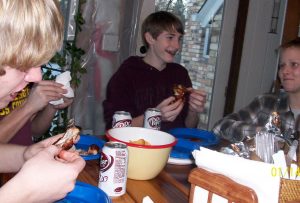
We would make sure we had plenty of wings to go around, at least twice. I have pictures of the kids smiling with sauced faces and sticky fingers. After the hosting responsibilities were passed on to his other friends, my son engaged us to help him make the wings to take along with him.
Parents would tell us stories of stashing away the chicken wings for themselves for later.
The recipe is simple. The main flavoring ingredient is mushroom soy sauce, with large amounts of chopped fresh garlic and freshly ground black pepper. You can get the mushroom soy sauce at an Asian specialty market, or you can use a good grocery store brand such as Kikkoman. It is worth firing up your grill to cook these wings. I live in a northern state, and we grill outside all year around. I think that makes them even more enjoyable in the middle of a cold winter.
After a National Alliance on Mental Illness (NAMI) fundraiser to honor my son, we hosted a gathering at our house. As we were bringing out the food and talking with his friends while they filled their plates, they reminisced about the chicken wings and my son’s gatherings at our house.
I miss my son beyond words, but these happy memories I share with you keep him present in my life.
Happiness is the background noise of young adults laughing late into the night.
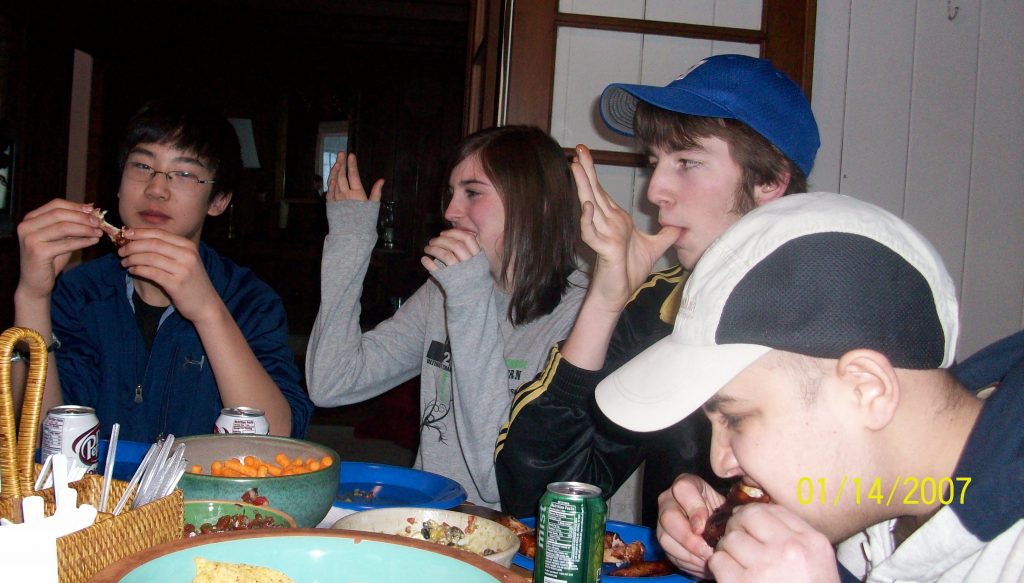
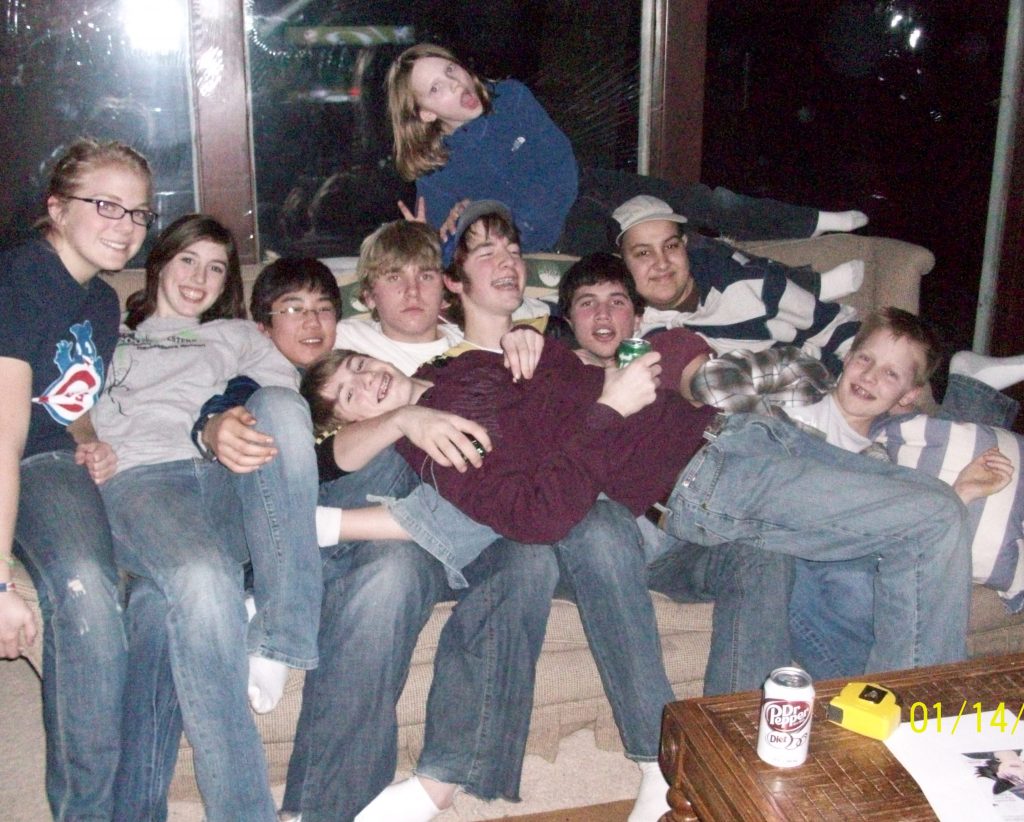
References
Pawlcyn, Cindy, et al. Big Small Plates. Ten Speed Press, 2006.
